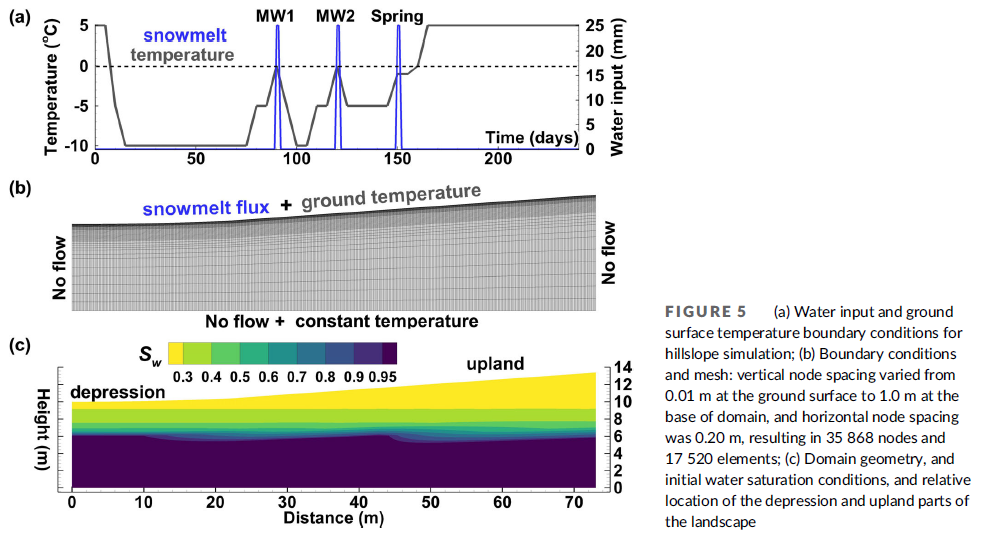HGS RESEARCH HIGHLIGHT – Simulating preferential flow and snowmelt partitioning in seasonally frozen hillslopes
-
AUTHORS: Aaron A. Mohammed, Edwin E. Cey, Masaki Hayashi, Michael V. Callaghan
This research highlights the ability to model pore-water freeze/thaw and how it impacts the partitioning of snowmelt into infiltration, runoff and groundwater recharge in seasonally frozen hillslopes.
This research follows on an earlier highlight by author Aaron Mohammed about the development of a dual-permeability model which integrates the effects of soil freeze-thaw and preferential flow on infiltration and runoff generation in structured soils. This formulation was incorporated successfully into HydroGeoSphere. Read the original research highlight here.
CLICK HERE TO READ THE ARTICLE.
Abstract:
The infiltrability of frozen soils strongly influences snowmelt partitioning and redistribution in cold regions. Preferential flow in frozen soil can enhance infiltration, but dynamics are complicated by coupled water and heat transfer processes as well as landscape conditions prior to and during snowmelt.

Model simulations in HydroGeoSphere, based on hydrological functioning and landscape properties of the Canadian Prairies, were used to evaluate a dual-domain (matrix and macropore) formulation of variably-saturated flow in frozen soils, with distinct water and heat transport regimes in each domain.

Two-dimensional hillslope simulations were able to capture the landscape hydrologic response to snowmelt fluxes observed in the Prairies and similar landscapes, specifically: (1) enhanced infiltration into frozen soil due to preferential flow, (2) refreezing of infiltrated water and its effect on the evolution of runoff generation in frozen soils, and (3) groundwater recharge prior to ground thaw. Results showed that multiple meltwater input events progressively decreased frozen soil infiltrability and increased runoff generation. Simulations demonstrated that refreezing of infiltrated water along preferential flowpaths is an important process governing the timing and magnitude of both runoff generation and groundwater recharge in frozen soils, but that this behaviour can be highly counterintuitive and depends on soil structure. The modeling framework provides a physically-based approach for describing these interacting preferential flow and soil freezing processes at the hillslope scale needed to simulate the hydrologic functioning of seasonally frozen landscapes.
